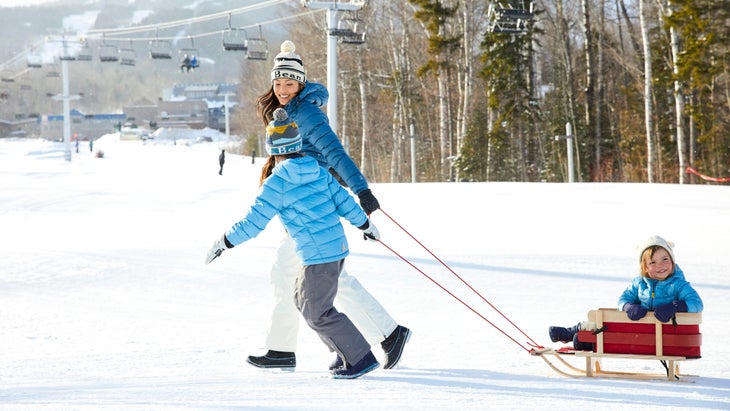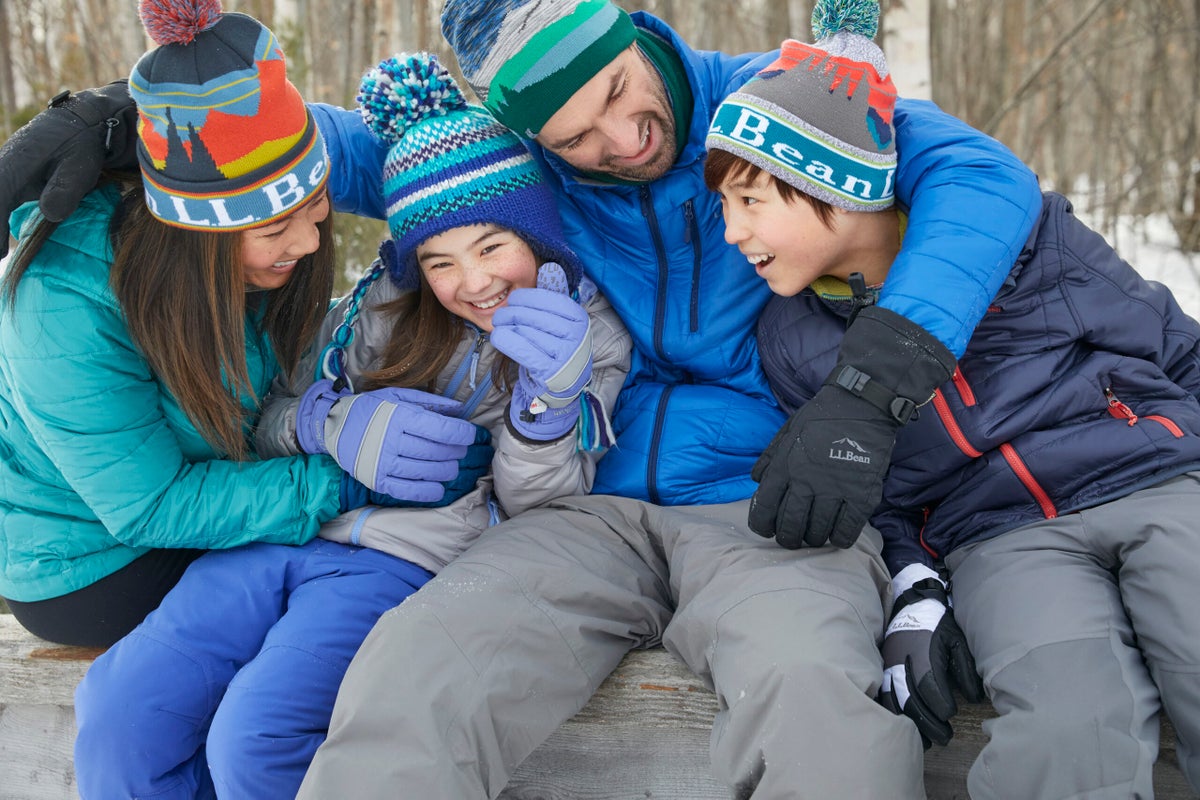No products in the cart.
Outdoor Adventure
The Definitive Guide to Layering for Cold-Weather Adventures
It’s cliché yet we’ve all heard it: There is no such thing as bad weather, just bad clothing. And while that expression feels trite and overcooked, it especially rings true for outdoor families during cold-weather months. We know it’s often easier to look at the plunging mercury and opt to stay indoors, but we’re here to divulge the secret to happy kids in cold temps: layering.
If done properly, layering can keep the whiniest of children (or adults…) comfortable in the chilliest of weather. But how do you know which layers to use in what conditions? You ask us. We created a comprehensive layering guide to take the guesswork out of layering. Now, focus your energy on shredding powder and demolishing snowballs rather than stressing over what to wear.
Why Layer?
Before we dive into the how, let’s chat about the why. The secret sauce of layering exists in what we cannot see: air. Surprisingly, air is a great insulator. When we layer clothing on top of each other, we are trapping pockets of air between the layers. Our body heat then warms the air and the layers keep that cozy space contained next to our skin. That’s why you get hotter as your physical exertion increases. You’re creating more body heat that subsequently sits next to your skin. Bonus: Layering also makes it easy to remove one layer when needed.
Of course, winter’s chilly elements–cold, wind, and moisture–all try to penetrate that snug cocoon of warmth. Choosing the proper layers minimizes this from happening.
A Layer Sandwich
Think of your layering system as a sandwich, just like that peanut-butter-and-jelly combo you stash in your pocket during ski days. Instead of bread, fat, and sugar, we’re looking at three layering components: a base layer, a midlayer, and an outer layer.
Baselayer
Often referred to as a next-to-skin layer, the baselayer is arguably the most important layer since it is designed to move moisture (like sweat) away from your body. This keeps your skin dry and thus, prevents conditions like hypothermia. Because of this, we think it’s the most important layer to splurge on for your children.
In general, you’re looking at one of two materials: natural fibers like wool and bamboo or synthetics like nylon and polyester. You can go with either, but definitely ditch the cotton. Cotton holds onto moisture, creating a wet layer sitting next to your skin. Not ideal.
Midlayer
Aptly named, the midlayer is the second component of the layering sandwich and sits between the baselayer and the shell. If the baselayer is designed to keep your skin dry, the midlayer keeps you warm. It does this by trapping all the body heat you radiate while playing outside. As a result, the more efficient your midlayer, the warmer you will be.
Pro tip: We often recommend a second midlayer for small children or babies who are sedentary inside a kid carrier or ski trailer.
Thanks to the materials, the midlayer typically fits puffier or bulkier than the baselayer. There are a variety of options, but most midlayers are constructed with fleece, wool, down insulation, or synthetic insulation.
Exterior Layer
As the third and final component of the layering trio, the exterior layer (or shell) is the piece of clothing that sits on top of the other two layers. The shell’s purpose is singular: prevent moisture and wind from penetrating the inner layers.
For adults and older children, the outer layer is often a single layer that is both waterproof and breathable. For younger children and babies, you’ll often find jackets and snowsuits that combine the outer weatherproof layer and the inner insulating midlayer into one item.

Layering Based on Temperature
We now know that a proper layering system is the key to keeping your family warm, but how does that change with different temperatures? Read the handy guide below to give yourself a head start when gearing your family up for the next wintry adventure.
Brisk (40-49 degrees Fahrenheit)
Temps that fall on the warmer side of cool aren’t terribly concerning, but it’s still a good idea to know how to prep your toddlers and babies since they cannot regulate their temperatures as easily as adults.
In this range, adults and older children should opt for a midweight baselayer. Top it off with an outer shell to keep inclement weather out, along with a pair of lightweight liner gloves to keep those fingers toasty. If you inherently run on the cold side, we’d also consider adding an insulating vest to throw on if you get chilly.
For toddlers and babies, we still recommend a midweight baselayer like this snazzy Wicked Warm Underwear set by L.L.Bean. Then, add a fleece midlayer (like this Classic Fleece) along with warmer pants. Wrap it up with an outer layer such as a rain jacket. Don’t forget to include essentials like a hat and warm mittens, along with waterproof boots.
Cold (20-39 degree Fahrenheit)
For a lot of us, our winter adventures will mainly live in this temperature range. The good news is that it’s easy to keep everyone warm so the fun doesn’t have to stop.
For adults and older children, start with a heavy base layer set on both the top and bottom. Then add in a lightweight synthetic insulated midlayer, like a lightweight puffy jacket. As with warmer temperatures, enclose the entire system in a waterproof-breathable shell jacket and pants. At these temps, adults will also want to add both a pair of warm gloves and a beanie like the Katahdin Pom Hat.
Younger children and babies should start with a heavy wool base layer as the first item. When possible, find a “onesie” that combines the top and the bottom layer into one article of clothing. Since there isn’t a gap at the waist, it’s easier to trap the warm air inside the baselayer.
Then, add on a thick fleece jacket and pants as a toasty midlayer. For the shell, use insulating snow pants and a coat like the Down Jacket (available in Mens, Womens and Kids sizes) that will uplevel warmth while also adding water resistance. As an alternative, find a one-piece insulating snowsuit that combines both the jacket and pants into one item. Just like the onesie, this will make it easier to keep your babes warm and dry (but also makes diaper changes and potty training a nightmare!) Throw in a beanie (like this Pom Hat) or a balaclava, along with a pair of waterproof mittens like these. For children, it’s important to stick to mittens rather than gloves since they will keep their fingers much warmer.
Finally, consider your child’s feet. At these temps, you always want to use a pair of warm wool socks. Not only will these keep their toes toasty, but the wool continues to warm their extremities even if they get wet. Regardless, don’t bulk up with multiple layers of cotton socks. Not only will the cotton make their feet colder, but the added layers will minimize any wiggle remove and thus, cut off circulation. Don’t forget the snow boots!
Final Thoughts
Accidents happen–especially with kids. Be prepared and stash an extra layering system (especially the base layers) in a dry bag during any winter adventures. You can thank us later.
Source link

